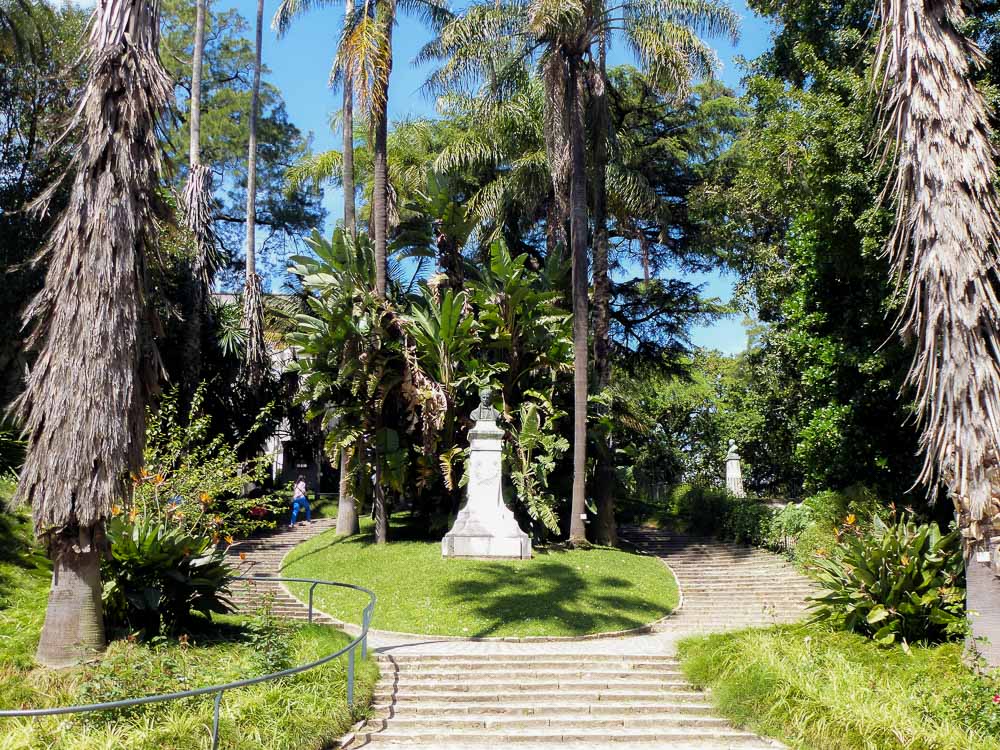The Lisbon Botanical Garden is the place to go if you want to enjoy some peace and quiet amidst nature right in the heart of Lisbon. Here’s everything you need to know about it before visiting!
If you’re anything like me, you probably need some time to unwind away from the city noise when traveling. That’s why the Lisbon Botanical Garden is such a great place to visit!
Located in the Príncipe Real neighborhood, this garden is a peaceful center for plant conservation and education, reflecting Lisbon’s dedication to maintaining natural spaces within its urban environment since the late 19th century.
For those interested in plants or simply looking for a break from all the sightseeing, the Botanical Garden in Lisbon is definitely worth a visit. And knowing what to expect always makes for a better experience, so today I’ll tell you everything you need to know about this beautiful place.
Ready? Let’s go!
Botanical Garden Lisbon – In a nutshell
- Highlights: large collection of palm trees, exotic plants and butterfly garden
- Opening hours: daily from 9am – 8pm (summer), 9am – 6pm (winter)
- Best time to visit: spring and summer
- Tickets/price: € 5 per person, children under 10 free. Sunday from 10am to 1pm free
- Recommended duration of visit: 1h
- Address: R. da Escola Politécnica 58, 1250-102
- Nearest metro station: Rato
Index
- Exploring the Lisbon Botanical Garden
- How to get tickets?
- How to get there?
- Opening hours and best time to visit
- How long does it take to visit?
- Attractions nearby
- Where to stay in Príncipe Real?
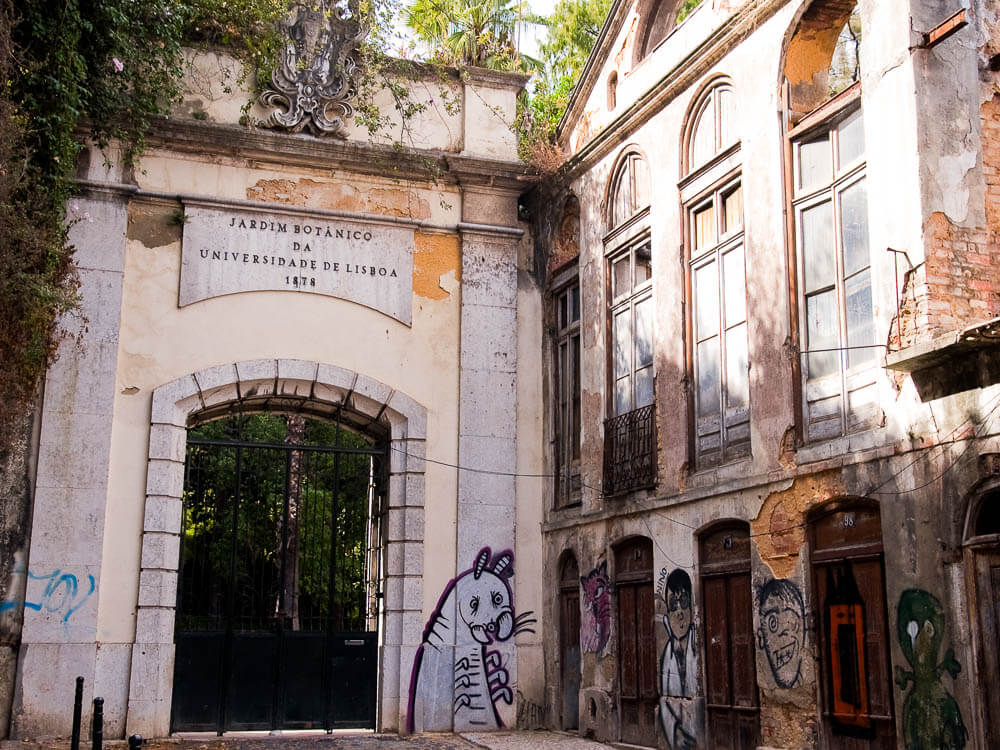
1. Exploring the Lisbon Botanical Garden
The Lisbon Botanical Garden is part of the National Museum of Natural History and Science at the University of Lisbon and first opened as a scientific garden in 1878, and was used for teaching and researching botany. It was even declared a National Monument in 2010 due to its importance in culture and science education.
It covers four hectares, housing over 18,000 plant species from all over the world, each neatly labeled, and was once known as the best botanical garden in Europe. Over time, it became neglected, but underwent extensive restoration between 2016 and 2018, and it’s now beginning to attract more visitors.
Today, the Lisbon Botanical Garden is largely dedicated to conserving endangered species and serves as an active center for studying biodiversity, understanding plant genetics and their environments.
1.1. Botanical species
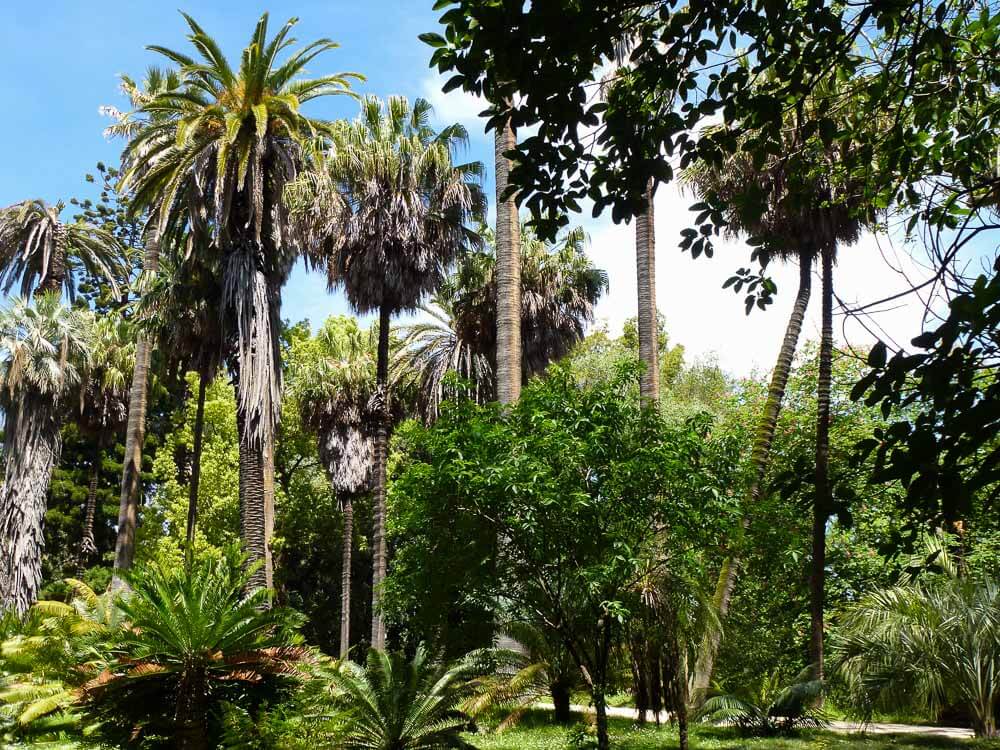
The Botanical Garden has a very impressive variety of plants, with over 18,000 specimens, many of which were brought to Portugal from the colonies, and some very rare ones. It’s divided into several sections, each with different types of plants.
The first thing you’ll notice as you enter is the vast collection of palm trees (over 30 types!) that gives the garden a delightful tropical vibe. There are also banana trees, ferns and carnivorous plants, as well as gardens dedicated to medicinal and aromatic plants.
You’ll also find an extensive selection of cacti and succulents, from small specimens to large ones, as well as plants from New Zealand, Australia, China, Japan, and South America. Among these are ornamental, exotic plants and cycads, which are some of the oldest plants on earth.
1.2. Architecture
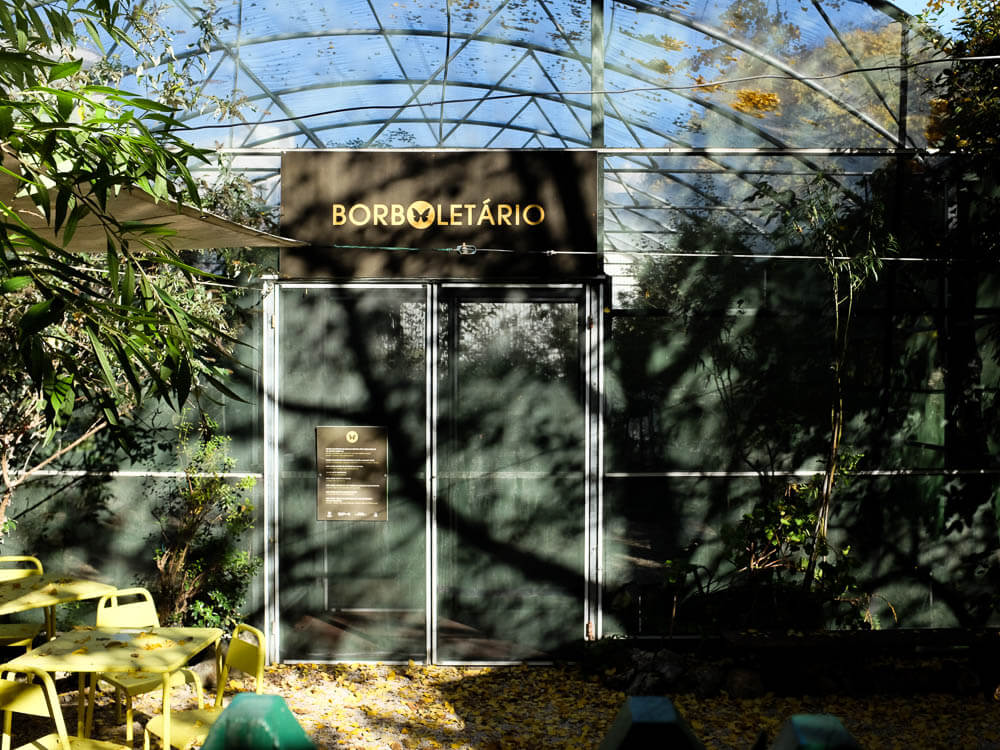
As often is the case in Portugal, the Lisbon Botanical Garden also has quite a bit of historical architecture. There, you’ll find several greenhouses from the 19th century, a palmarium, a herbarium and an astronomical observatory, which is still active to this day!
There’s also the butterfly house, a greenhouse where butterflies are bred, a perfect place to observe these insects among flowers, learn about pollination and their role within ecosystems.
You’ll also see former academic buildings that now make up Museus de Politécnica (Natural History and Science Museums), maintaining their role in education through their biological and geological collections.
Besides all that, the gardens paths are lined with ornate fountains and statues dating back to the late 19th century. The combination of all of these elements and the slight unkemptness of some areas make it seem like an enchanted garden, which is probably why I love this place so much!
2. How to get tickets?
Tickets are available at the main entrance on Praça do Príncipe Real. The entry fee is € 5 per person, and family tickets are € 8 (2 adults + 2 children under 17). There’s also a combination ticket for both the garden and museum for € 8.
On Sundays from 10am to 1pm, admission is free, and there’s no entry fee for children under 10.
If you want to have an even more informative and pleasant experience, you can join one of the guided tours that are available on Saturdays and Sundays, offering insight into the various plant species, as well as information about the history of the place.
3. How to get there?
With its central location in the Príncipe Real neighborhood, it’s very easy to access the Lisbon Botanical Garden both by walking or public transport.
The main entrance is at Praça do Príncipe Real, and tram 24E and bus 758 stop right at the park’s entry, while metro station Rato (last stop of the yellow line) is just a short walk away from the garden’s entrance.
4. Opening hours and best time to visit
The garden is open daily, except for Christmas Day, New Year’s Day, Easter Sunday, and May 1st. In the summer (April 1st to September 30th), it opens between 10am and 8pm. In the winter (October 1st to March 31st), it’s open between 10am and 5pm. Last entry is 30 minutes before closing.
As for the best time to visit, I’d have to say summer and spring. After all, that’s when the garden is at its most beautiful, with the blooming flowers and sunny days! But other seasons bring out a different kind of beauty in the gardens, so I’m sure you’ll enjoy it no matter when you visit.
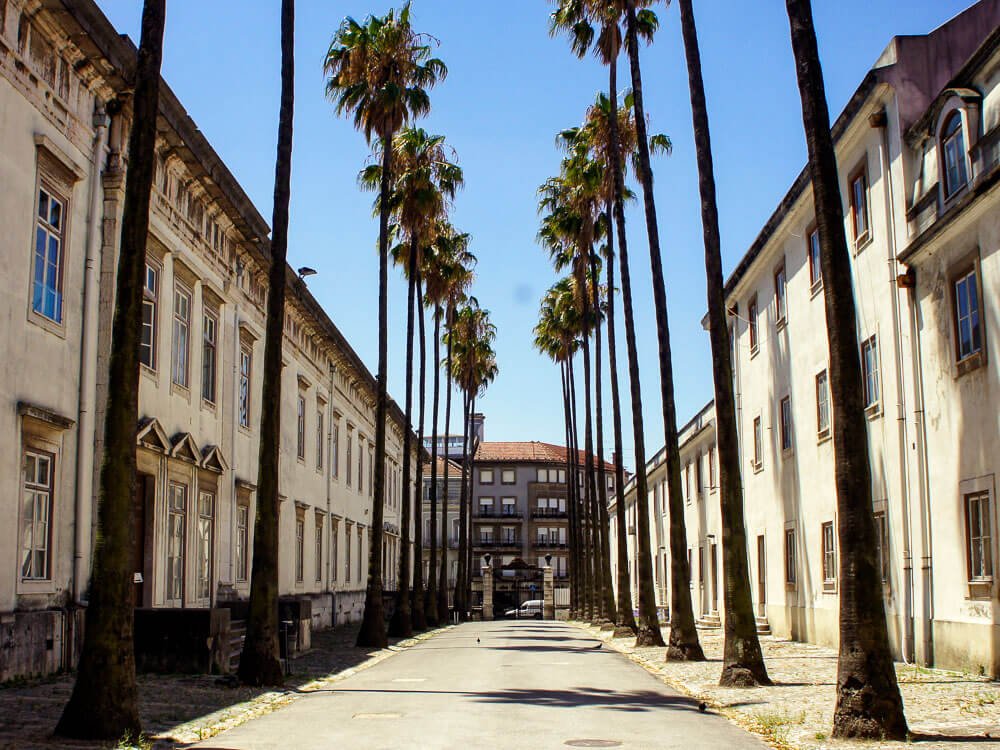
5. How long does it take to visit?
If you’re short on time, spending an hour at the Botanical Garden is enough to explore the highlights. However, if you’re very interested in learning more about the plants and want to visit every corner of the garden, I’d recommend spending at least 2 hours.
And, while you’re at it, you should also consider swinging by the National Museum of Natural History and Science, which is right next door to the Botanical Garden. I think it really enhances the overall experience and adds extra value to your trip.
Sure, it might take up more of your day, but trust me, it’s worth it!
6. Attractions nearby
Next to the garden is the National Museum of Natural History and Science, where you’ll find collections related to various topics, from zoology to geology, and learn more about Portugal’s contributions to science.
A short walk from the Botanical Garden is Jardim do Príncipe Real, a park known for its variety of plants and shaded walkways, and Miradouro de São Pedro de Alcântara, a viewpoint offering broad views across Lisbon.
Also close by is São Roque Church, one of Lisbon’s most famous religious buildings, with a beautiful baroque design and traditional azulejo tiles that reflect its 16th-century origins.
7. Where to stay in Príncipe Real?
Príncipe Real is a great neighborhood to stay in Lisbon, full of local shops, historical homes, and an active cultural scene. Here are my main recommendations if you’re looking to stay in the area:
- Hotel Botanico: positioned between Avenida da Liberdade and the university’s Botanical Gardens, it offers convenient access to Jardim Botânico de Lisboa as well as amenities like breakfast, a lounge for relaxation, and complimentary Wi-Fi.
- Maxime Hotel: once a cabaret, it now operates as a hotel that pays homage to its origins through themed rooms. Visitors can enjoy drinks at the bar or try meals from the menu that draws inspiration from the building’s past life. Cabaret performances still take place here occasionally.
- Hotel Príncipe Real: about 10 minutes from the Botanical Garden, this hotel offers breakfast, free Wi-Fi service, a bar that is open around-the-clock and rooms with private balconies.
Ready to enjoy the beauty and nature of the Lisbon Botanical Garden?
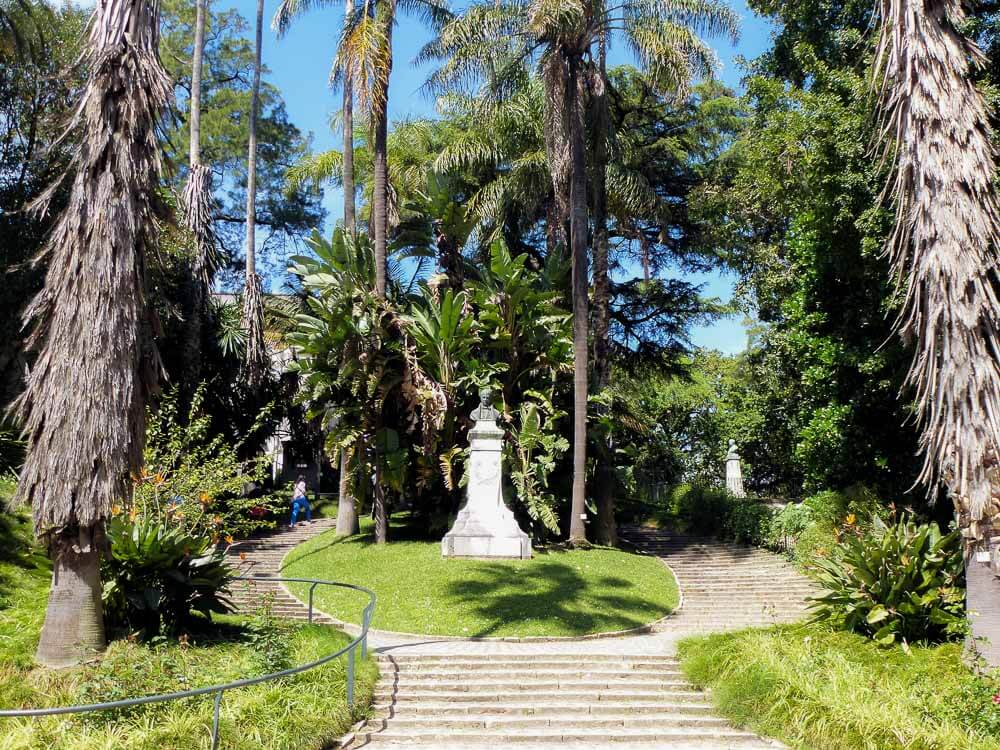
The Lisbon Botanical Garden is one of my favorite places to enjoy some peaceful and quiet moments while still being in the city center. Not only does it offer a great variety of plant species, but also serves educational purposes and highlights Lisbon’s efforts in integrating natural preservation with urban growth.
If you’re looking for a laid-back and pleasant educational attraction, away from the crowds, I can’t recommend enough that you visit these gardens! As you walk through the greenery, it’s impossible not to feel removed from urban pressures and worries.
So, don’t miss out on the opportunity to learn more about Portugal’s environment in this 19th century garden. I’m sure you’ll leave feeling renewed!

